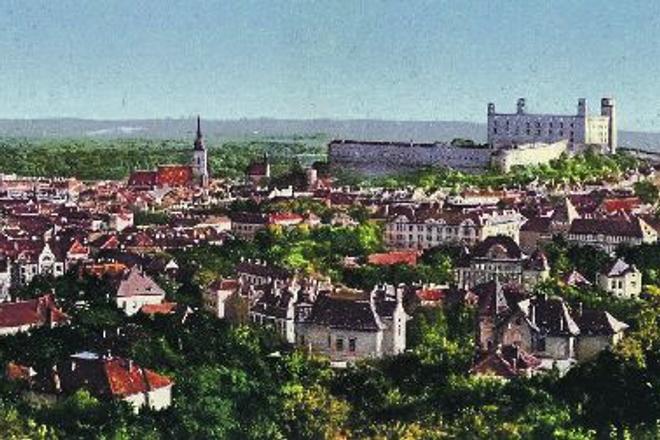LOOKING at the Bratislava Castle hill and surrounding slopes in this 1914 postcard we can see that many things look different from how they do today. Firstly, the castle was still a ruin; its reconstruction was to come several decades later. Many Bratislavans did not take the city’s dominant landmark seriously and called it “a bed turned upside down”.
The space to the right of the castle was not yet covered with buildings, and it was still full of vineyards, just like thousands of years before. It is possible that viticulture in Bratislava is as old as the city itself.
The oldest written mention of the city’s vineyards dates back to 1246, and it speaks about the sale of a vineyard “retro castrum”, i.e. behind the castle.
This vineyard belonged to the order of Cistercian nuns. However, in 1246, the Mother Superior sold it to the Abbot of the Heiligenkreuz monastery in Austria, for its branch residing in today’s Michael’s Street / Michalská ulica. The church was one of the mightiest players on the political scene back then, and vineyards were among the most desirable “commodities”.
Slightly exaggerating, we could say that the big green area of vineyards in this postcard symbolises the source and origin of the hundreds of years of prosperity of the city lying beneath it.


